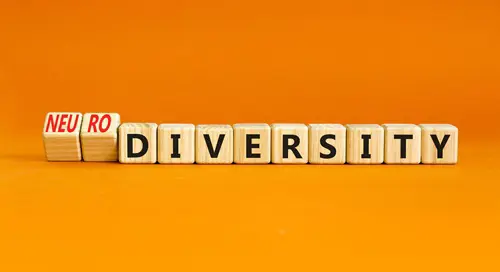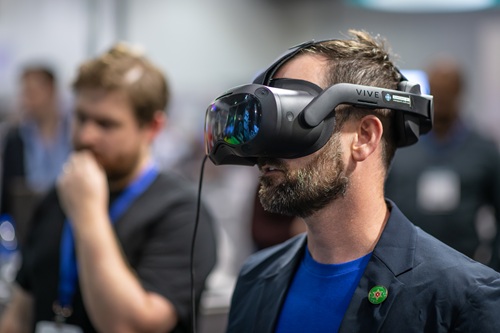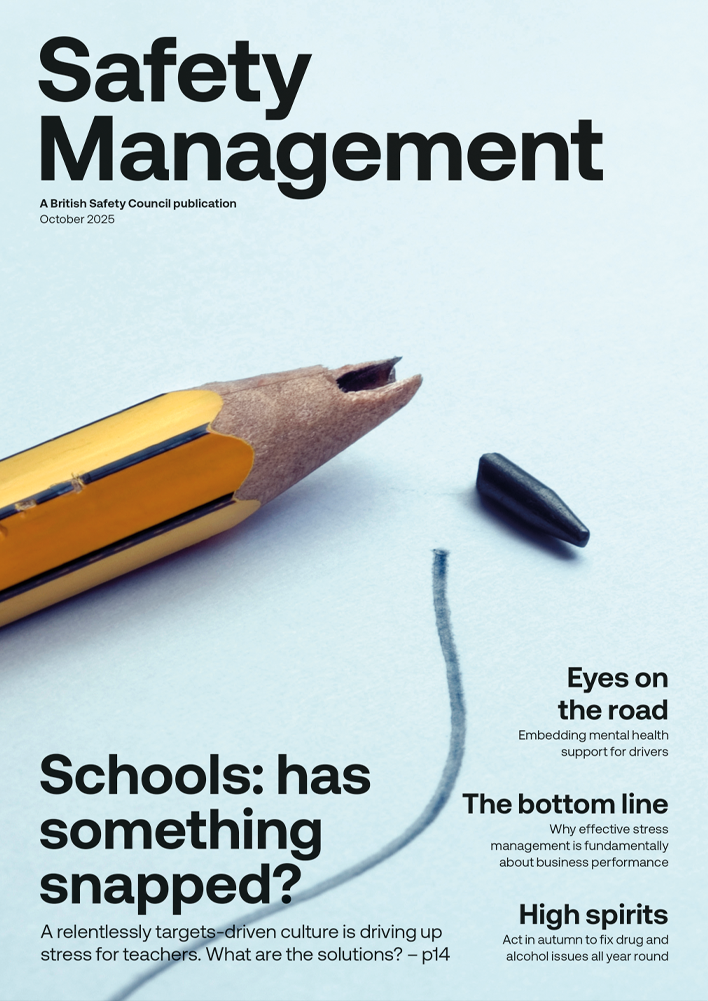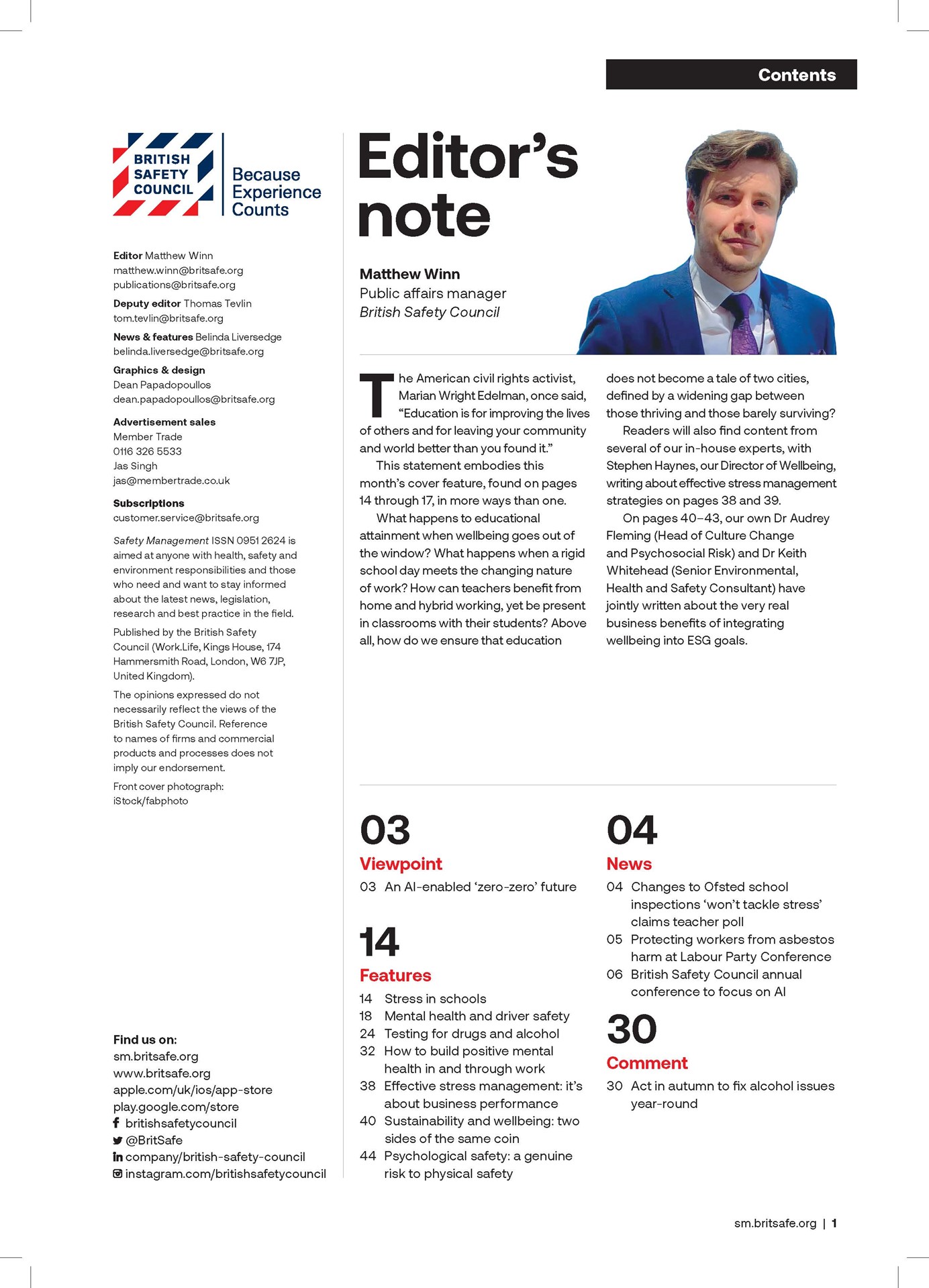Conducting 150,000 interviews in 140 countries, Lloyd’s Register Foundation’s World Risk Poll is uniquely positioned to tell us about harm at work. But can information also spur change?
Features
Safety in numbers
“For most of the world you can’t track this kind of trend on safety,” says Ed Morrow, Lloyd’s Register Foundation’s head of evidence communications. “In developed countries, yes – perhaps – because you have the official data, you have statistics, things are reported. But for a lot of the world, it was a complete mystery. We decided that one way of filling that gap is to go directly to people and ask them about their experience.”
In the 21st century we have largely been in the dark about how far workers in all parts of the world feel safe at work or not. Seeking to change that is Lloyd’s Register Foundation, established by the Lloyd’s Register company whose history goes back to 1760 – the year merchants first met at Edward Lloyd’s coffee house in London to discuss publishing a ‘register’ of ships that assessed their quality and condition.
The charitable foundation was founded in 2012 and with it brings a new energy focused on the future but still rooted in evidence and information to solve the world’s problems on safety. The World Risk Poll, which it launched in 2019 in partnership with global analytics and advisory company Gallup, is the first survey of its kind, based on almost 150,000 interviews carried out on the ground or by phone in over 140 countries and territories, including in places where little or no official data on safety and risk exists. We spoke to Ed and Aaron Gardner – who leads on the analysis – to find out more about the headline findings of the work to date and how far data might facilitate solutions to some of the most pressing global safety challenges.
 Photograph: iStock
Photograph: iStock
Globally, more than one in six workers, or 18 per cent of the world’s workforce, have experienced harm at work according to the 2024 World Risk Poll (based on 2023 field research). “The global level metric has been stubbornly high across the period we’ve been working in (since 2019),” says Ed. “But harm is something that varies significantly in different global regions, different industries and there are some places where we have seen change in the World Risk Poll data.”
Shining a light on countries hidden from official data
What’s interesting to see for the first time in a global survey on risk at work is data on countries usually hidden from official reports. China, many African countries, Afghanistan, Honduras and Bangladesh are all featured in the report. These countries are all missing from the International Labour Organisation’s (ILO’s) data set, the ‘bible’ of global data on safety.
How do they achieve these results given the many barriers when it comes to speaking honestly about safety? In many countries, speaking up about unsafe working conditions might lead you to lose your job, or worse. According to the International Trade Union Confederation, eight in 10 countries denied their workers the chance to bargain for better conditions in 2024, and at least 22 workers lost their lives while protesting or standing up for rights at work. People still face arrest or prison for unsanctioned protests about work.
Creating a safe space for people to report their experiences without fear of negative consequences is a vital part of the poll’s process. “People’s experiences of harm at work are a critical part of the evidence base for occupational safety,” stresses Ed. “If we do not know the nature and extent of safety challenges that people are experiencing at work, we cannot hope to tackle them effectively. The World Risk Poll provides an avenue via which we can gather this important data, even in localities where workers’ rights may be under pressure.”
 Countries from the African continent feature heavily in the list of countries where rates of workplace harm are highest. In Uganda, where this photo of construction workers was taken, 22 per cent of workers experienced serious harm in the past two years. Photograph: iStock
Countries from the African continent feature heavily in the list of countries where rates of workplace harm are highest. In Uganda, where this photo of construction workers was taken, 22 per cent of workers experienced serious harm in the past two years. Photograph: iStock
The art of data gathering
The team therefore carefully word the Poll’s questions to encourage people to feel safe and normal in being truthful about the risks they face.
One of the questions they asked in a section on workplace violence is: ‘Did you ever tell anyone about the violence and/or harassment that you experienced AT WORK?’ It is purposely conversational, says Ed: “You can hear reporting with a big R, it sounds like it means to an official channel or body, whereas if you say, ‘tell someone’, it could cover your friends, your family or colleagues. We wanted to open up that wider interpretation.”
Language is as important as the data collected. Each question will go through ‘cognitive testing’ before going out in a ‘pilot survey’ in locations with different people to test how they respond, “to see if they’re giving us responses that show their understanding of what we were trying to get at,” says Ed.
“We will then come back and refine the wording of the question on the basis of that cognitive testing and sometimes, Gallup’s experts will say to us, ‘OK, this didn’t quite work, but we could tweak the wording like this’ or they’re saying ‘this question isn’t really a starter, it’s just not going to work across different kinds of cultural contexts and different interpretations,’” he continues. It’s a process of distilling: “It takes a few different heads at a few different stages to refine down to something that works.”
62 per cent never been trained in OSH
With over 140 countries to cover, there are typically 30 or more people in each country working on it. Aaron and Ed are among 20 colleagues working in the collaborative Lloyd’s Register Foundation-Gallup back-office team. With such a big project and scope, choosing a safety topic to zone in on is the next challenge. “Obviously we would like to start seeing trends and that’s why we run [the poll] longitudinally, but it’s also enriched differently every two years, which allows us to tell different stories [tied to world events or problems],” says Ed. One focus in the 2025 Poll will be climate change, with the report due out in 2026.
The last report from 2024 had a focus on occupational safety and health (OSH) training. What did it reveal? In headline findings, 62 per cent, or nearly two thirds, of the world’s workforce have never been trained in OSH. In Africa, more than four in five current workers have never had any formal training. Certain sectors stand out – in agriculture, 80 percent of workers have had no training, in construction it is 60 per cent.
Making the direct link between training and reducing workplace harm is challenging. Indeed, the same proportion – nine percent – of construction workers experienced harm at work in the past two years in Australia and New Zealand as in Northern Africa, even though nearly all construction workers were trained in safety in Australia and New Zealand but practically none (formally) in North Africa.
What the report did indicate is that regular training raises individual awareness but also fosters a culture of safety communication. You are, for example, 3.3 times more likely to report harm or tell someone about it when it does occur if you’ve been trained than if you have never had any OSH training. “Our interpretation of that is that by receiving training people are more aware of what harm can actually mean,” explains Aaron. “Occupational health and safety training educates people about different types of harm, but also how they can be reported via mechanisms that should be part of the training as well.”
£2m to discover solutions to safety problems
Interesting from a research perspective as these findings are, the Poll’s big aim is to spur employers, governments, OSH institutes, and international organisations such as the ILO to make practical improvements to the problems it exposes. Ideally, we will see the rates of harm go down as we see interventions go up. In May, the Foundation launched its Global Safety Evidence Centre with £2 million in grants in the offing to bidders who can help fill evidence gaps on cost-effective interventions to reduce the three million annual death toll of workplace harm.
This is the “next level of the equation” states Ed, with the Foundation citing a “worrying scarcity of reliable, high-quality evidence on the comparative effectiveness of different safety measures.” “The World Risk Poll is going to be a key part of [the Centre’s work] in terms of understanding the nature and scale of global safety challenges,” he says.
So far, the Poll has had some successes in influencing policy change. The Philippines Senate, for example, recently cited World Risk Poll data on the prevalence of violence and harassment in workplaces in the country in their decision to ratify the ILO Convention No. 190 on tackling this issue. “So, that’s [one] end of the scale, in terms of the policy influence that we’re looking to drive with the data,” adds Ed.
But there’s one simple question to ask. Is the world becoming a safer place for workers? Will this be the story that the poll eventually gets to tell? “It’s one of these ones where it would be amazing, if we could have, rather than a poll from just 2019, we could have the same poll of 1819 and 1919 and then see those changes over time. Because I think if you looked at that time frame, it would be hard not to be optimistic,” says Aaron.
For all the circling fears about the future 100 years - how AI will impact worker safety and health, the increasing threat of authoritarian leaders, climate change – recording people’s experiences of harm at work is important, not just as a document of risk but of how well we are succeeding in tackling those risks in all corners of the world. “I am optimistic that in a lot of countries there will be continued improvements, but that’s why we need the data,” insists Aaron.
“If we don’t have it then it’s very easy to backslide on things. If you can keep putting the numbers out there saying, ‘this is an issue, this is something that needs to be addressed’, then it gives workers and their representatives the power to advocate for that change. We need to keep doing it.”
Read the latest World Risk Poll report here
Find out more about the Global Safety Evidence Centre here
FEATURES

Why menstruation support matters at work
By Deborah Garlick, Menstruation Friendly by Henpicked on 03 December 2025
Although forward-thinking organisations are increasingly taking action on menopause awareness and support at work, attention is now turning to menstrual health as the next essential step in building an inclusive, equitable and high-performing workplace.

Neurodiversity at work: getting started on creating a supportive environment for neurodivergent workers
By Andy Hooke CMIOSH Chartered health and safety consultant on 03 December 2025
Creating a neuroinclusive workplace brings many benefits, including making neurodivergent employees more comfortable about seeking help and support from managers and colleagues, and there are some simple ways of getting started with the process.

Human-centred technology for better work design: rethinking musculoskeletal disorder prevention
By Cam Stevens, Pocketknife Group on 03 December 2025
Although technologies like computer vision analysis, machine learning and wearable sensors are increasingly being used to identify and assess the causes of work-related musculoskeletal disorders (MSDs), it’s essential to consider data relating to all aspects of work design when seeking to reduce MSDs in the workplace.



